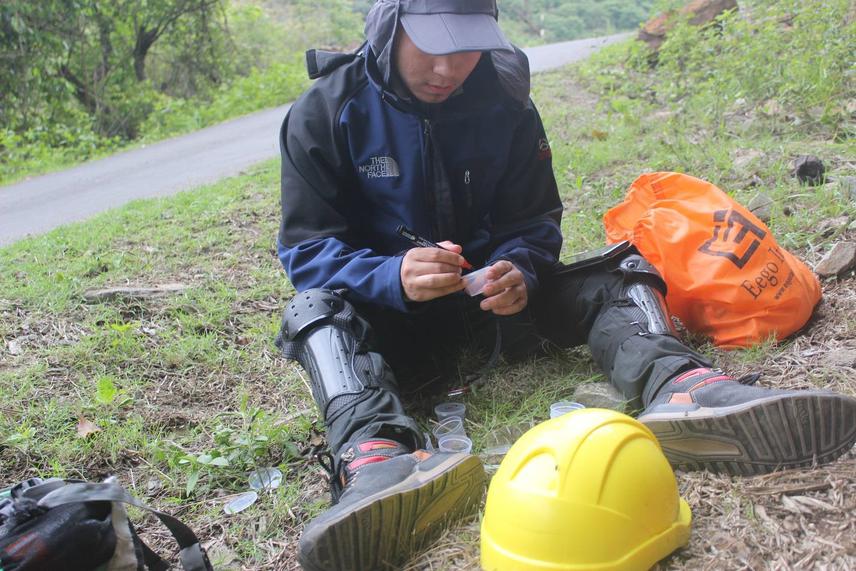Sonam Norbu
Other projects
9 Nov 2016
Distribution, Habitat Assessment and Understanding Threats to Red Panda in Buffer Area of Jigme Khesar Strict Nature Reserve
This project aims at presenting data on the cave biodiversity, in particular regarding invertebrates, and capacity building through educational programs which will help local people and students to understand the relevance of cave conservation and their role to reduce anthropogenic influence on the caves.

Field assistant labeling specimens collected during the field data collection.
Cave invertebrates are a critical component of South Asia’s threatened fauna. Although it was known that conservation of invertebrates is essential in Bhutan, what is currently focused and prioritized are mostly the flagship species. Invertebrates are poorly studied in Bhutan. Cave dwelling invertebrates has never been studied before to date and there is huge lacuna of knowledge about their diversity, distribution, ecology and habitat. World-wide caves contain a relatively high percentage of endemic taxa and there is no reason to assume that this would be different in Bhutan. So, to study cave invertebrate diversity is nationally important as it is everyone’s concern to conserve species through documentation of scientific data.
The geographic rarity of cave species makes them especially vulnerable to human activities (Elliott, 2005). A number of obligate cave-dwelling species are on the IUCN red list, the U.S. Endangered Species list, and several species are protected in the European Union under the Habitat Directive (Tercafs, 2001). The cave dwelling species are largely threatened by habitat loss and ongoing habitat degradation with threats from developmental activities such as stone mining activities and other industries nearby. Though the multitude of threats they face are widely recognized, it has been largely neglected by the conservation community to date as conservation and research are mostly focused on higher and charismatic taxa in Bhutan. To avoid large knowledge and research gaps in conservation of cave biodiversity, studies on cave dwelling invertebrates are required at greater attention. In Bhutan threats faced by cave-dwelling invertebrates are habitat loss, degradation, fragmentation, forest fire, anthropological activities and lack of knowledge base (Poel, 2013).
This research project targets to develop a long term cave biodiversity research and conservation program, aiming at:
1) Evaluating and documenting the composition of the cave invertebrate assemblage in the caves of Khoma along with their habitat conditions.
2) Assessing potential conservation threats to cave invertebrates and generating understanding of their status.
3) Creating environmental education and conservation outreach program in collaboration with local communities, schools and colleges of Bhutan to increase awareness by providing wider information sharing about the conservation importance of caves.
4) Contributing more generally to knowledge of the hitherto largely neglected evertebrate biodiversity of Bhutan, and providing data that may suit to place Bhutan biogeographically better founded on the map.